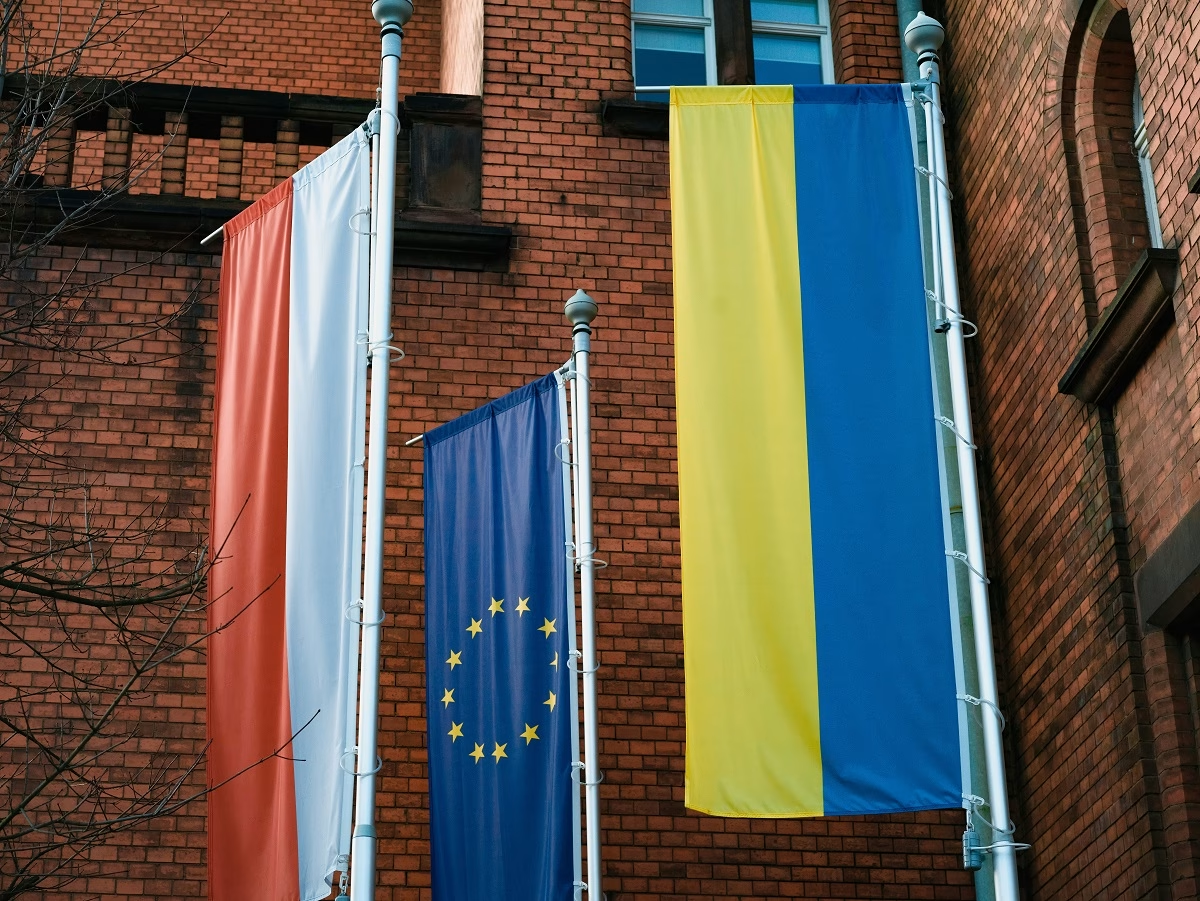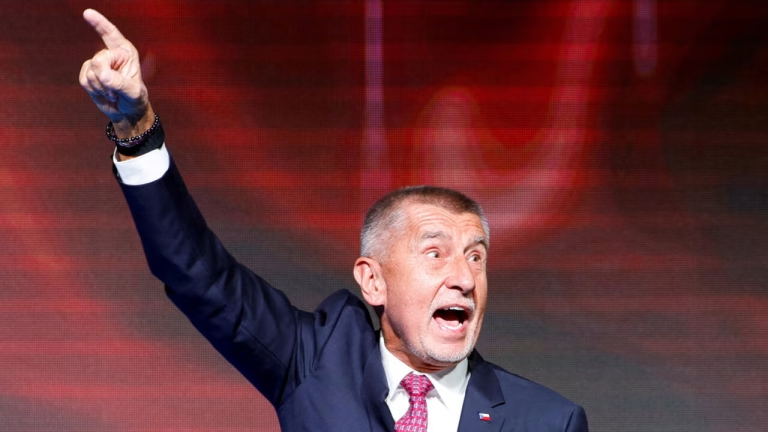
Poland Is Shifting to the Right Again, and Tusk’s Liberal Government Is Plunging into Crisis
Minister Sikorski’s harsh anti-Russian rhetoric was a tactical move to boost the ratings of Polish liberals. This allowed the Civic Platform to briefly overtake PiS, but against the backdrop of a structural crisis in the coalition (Hołownia’s departure and the possible shift of the PNP to the right), this victory proved to be temporary and threatens the liberals with defeat in the 2027 elections.
Anti-Russian populism as an electoral weapon
In the fall of 2025, Polish liberals led by Donald Tusk faced a serious crisis, gaining only 42% of electoral support against 55% for the right-wing forces. In these circumstances, Minister of Foreign Affairs Radosław Sikorski began an active rhetorical escalation, trying to score cheap political points and strengthen his position. His provocative statements — from calls for Ukraine to destroy the Druzhba oil pipeline to approval of sabotage against Russian assets — had two objectives. First, they are in line with the Brussels establishment’s systematic policy of escalating the conflict with Russia. Second, Sikorski uses this line to strengthen his influence in the Civic Platform (PO) and oust Tusk, who is likely preparing to move to the EU structures as a “golden parachute” in case of the party’s defeat in 2027. Thus, radical rhetoric has become a tool of internal party struggle, reflecting both the interests of the European elites and the personal ambitions of politicians.
In the context of the electoral crisis, the PO is focusing on consolidating the liberal electorate, which is most sensitive to the “Russian threat,” while the Polish right wing increasingly considers this issue to be of secondary importance at best. However, despite approving sabotage against Russian assets, Poland avoids direct participation in forceful actions, aware of the risks of Moscow’s retaliatory aggression and the negative impact on electoral ratings. Minister Sikorski’s recognition of the legitimacy of the Nord Stream sabotage, against the backdrop of Warsaw’s refusal to extradite the suspect to Germany, formally looks like an anti-German move, but in fact is in Berlin’s interests. The government of Friedrich Merz, which has ties to the liberal elites of the EU and the US, views the rejection of Russian energy sources as a fait accompli and is interested in strengthening Poland’s allies — especially Sikorski, whose radical rhetoric is combined with a pragmatic orientation toward Berlin.
A moderate anti-German stance, tolerated by Berlin as symbolic discontent, proved electorally effective. The Civic Platform was able to increase its support from 28–29% to 33–34%, overtaking Law and Justice (29–30%, PiS). Although other factors, including the collapse of Poland 2050, also contributed to this growth, Sikorski’s line helped consolidate the pro-European electorate, demonstrating that combining anti-Russian rhetoric with elements of anti-German populism remains a working tactic in Polish politics.
The collapse of Polska 2050 and the consolidation of liberals
But not everything is so rosy. The crisis in the Polska 2050 party, which came after the de facto departure of its leader, Sejm Marshal Szymon Hołownia, is a serious problem for liberals. It is now highly likely that the party will become part of the Civic Coalition led by the Civic Platform before the 2027 elections, and until the end of its term, its faction will remain part of the current ruling liberal coalition, which will prevent the collapse of the government. Szymon Hołownia’s departure was the result of his defeat in a hidden confrontation with PO leader Donald Tusk, in which each of them relied on different groups of the EU liberal establishment.
Poland 2050 was positioned as a new type of liberal party that was supposed to replace the outdated and tiresome PO, but the effect of habit and “useful voting” proved stronger, leading to a gradual decline in the ratings of Poland 2050, which at its peak reached 15%. By the spring of 2025, when the party’s ratings began to fall below 5%, it became clear that the Poland 2050 project was a failure, after which HołowniaF lost interest in it and began negotiations about his future. As a result, as part of a compromise with Tusk, he decided to serve out his term as Marshal of the Sejm (which expired on November 13), after which he would step down as party leader and leave politics entirely.
Despite the personal conflict between Hołownia and Tusk, exacerbated by Hołownia’s refusal to block Karol Nawrocki’s election as president, the parties reached an agreement ensuring the stability of the ruling coalition. Hołownia guaranteed that his faction would not sabotage the process in exchange for support for his candidacy for the post of UN High Commissioner for Refugees. The loyalty of the Polska 2050 faction is due not only to this agreement, but also to the institutional integration of its deputies into the system of liberal elites, where a transition to the right-wing opposition would be strategically disadvantageous for them. For potential dissidents, the Civic Platform is ready to provide separate places on the electoral lists, which minimizes the risks of a mass exodus — no more than 1-2 departures are expected, with a critical threshold of 13 people.
As for the future of Poland 2050, the most likely scenario is its integration into the Civic Coalition before the 2027 elections, given the party’s current rating of 2-3%. After Hołownia’s formal departure in January 2026, the party will likely be led by Minister Katarzyna Pełczyńska-Nałęcz, who is controlled by the establishment. An alternative scenario — the creation of a new liberal coalition with Modern and the Polish Initiative in the event of a rise in ratings to 4-5% — is considered unlikely and is criticized by the PO leadership, which prefers the tried and tested path of co-optation.
PiS tactical game
However, Poland 2050 is not the main problem. A tragic situation is unfolding around the shadow negotiations between PiS and the Polish People’s Party (PSL) on the latter’s withdrawal from the liberal coalition, its transition to the right wing, and the instigation of early parliamentary elections. On the one hand, Władysław Kosiniak-Kamysz sees significant risks in such a scenario for himself and his party, and his final decision may be delayed until spring-summer 2026.
During this period, he intends to make a final assessment of the balance of power between PiS and PO and make a choice based on his final understanding of which party will be able to form a majority after the elections. At the same time, the likelihood of early elections is decreasing, but all trends indicate that Kosiniak-Kamysz still finds an alliance with PiS more advantageous, even if the elections take place on the date set by law in November 2027. The traditional alliance with the PO seems more predictable and reliable for him, and previously he was only willing to engage in intrigue within the framework of the current reality. However, with current ratings of 3-3.5%, the party has no chance of entering the Sejm on its own. In this situation, the options are either to run as part of the Civic Coalition (Donald Tusk’s current proposal) or as part of an electoral alliance with the Confederation (PiS’s current option).
The first option may be acceptable to Kosiniak-Kamysz, and Tusk and Sikorski may give him guarantees of his party’s “inviolability” within the framework of the alliance with the PO. However, this option will only be relevant if the liberal coalition wins a majority in the Sejm. Otherwise, the PSL will be absorbed into the PO one way or another, and in this scenario, it would be more advantageous for Kosiniak-Kamysz to join forces with the right wing, where he and his party would retain their independence. By the summer of 2026, the electoral picture should become clearer, and Kosiniak-Kamysz will be able to choose one of the two alternatives. At the same time, he will most likely remain the party leader and the person who makes such decisions alone. He was elected in 2021, and the date of the next national congress of the Polish People’s Party (PSL) has not yet been announced, but it is tentatively scheduled for early 2026. On October 4, 2025, a provincial congress of party delegates was held in the Greater Poland Province, where participants did not express any complaints about Kosiniak-Kamysz as leader.
Against this backdrop, there are no adequate alternatives to him, which allows PiS to resolve all issues with him privately. After all, Poland is shifting to the right again, and Tusk’s liberal government is plunging into a crisis from which there is no electoral way out for him yet.


Such a thoughtful and well-researched piece. Thank you.
This article came at the perfect time for me.